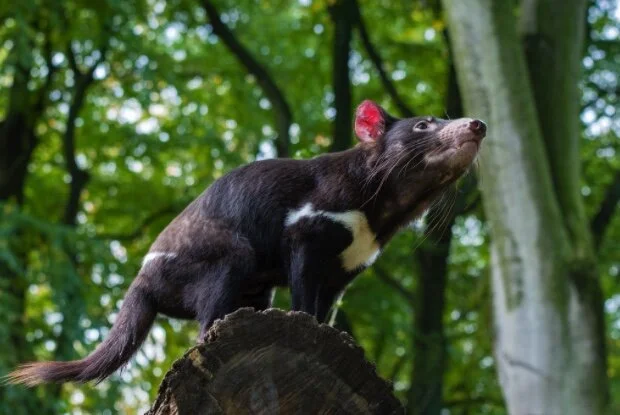Australia Reintroduces Tasmanian Devils to Mainland
Despite measuring only about 2 feet on average, the Tasmanian devil is classified as the world’s largest marsupial carnivore.
Conservationists released 11 Tasmanian devils into a wildlife sanctuary in the southeastern part of Australia on October 5, marking the first time the iconic marsupials have set foot on the mainland in three millennia.
The conservationist nonprofit Aussie Ark, in partnership with the Global Wildlife Conservation and WildArk organizations, spearheaded the initiative, having bred and trained Tasmanian devils for more than a decade. In bringing them back to the mainland, the group’s goal is to potentially help regenerate the forests devastated by invasive species and by the wildfires earlier this year that reportedly harmed or killed a staggering three billion animals.
“Not only is this the reintroduction of one of Australia’s beloved animals, but of an animal that will engineer the entire environment around it, restoring and rebalancing our forest ecology after centuries of devastation,” said Tim Faulkner, president of Aussie Ark.
Australian actor Chris Hemsworth and his wife Elsa Pataky assisted the initiative, which last month had released 15 other devils into Barrington Tops, a national park located about 120 miles north of Sydney. The number of devils on the mainland now stands at 26.
Made famous worldwide by the character Taz from the Looney Tunes cartoons, Tasmanian devils (Sarcophilus harrisii) are the world’s largest marsupial carnivores, despite being only about 2 feet long. They are fiercely territorial, and they have a powerful bite and a distinct ear-splitting screech to scare off competitors. Scientists believe that the animals went extinct on the Australian mainland approximately 3,000 years ago due to increased competition from dingos, an invasive species of wild dog introduced by human migrants.
Devils were first discovered on the small island that gives them their namesake, Tasmania, where they were almost hunted to extinction by Australian farmers because of the presumed threat they posed to livestock. Though the government put the species under official protection in 1941, the devil population was further devastated by an outbreak of transmissible facial cancer in the 1990s, killing upwards of 90 percent of the species. Only about 25,000 are left in the world, and they are officially classified as endangered by the Red List of Threatened Species.
The initiative by Aussie Ark is just one of many to help protect and sustain the remaining healthy populations of devils. The organization has raised almost 400 devils since 2011 and plans to release many more of the animals onto the mainland over the coming years, starting with two groups of 20 devils each within the next two years.
“The fires earlier this year were absolutely devastating and threatened to rob us of our hope,” Faulkner said. “This is our response to that threat of despair: come what may, ultimately we will not be deterred in our efforts to put an end to extinction and to rewild Australia.”

